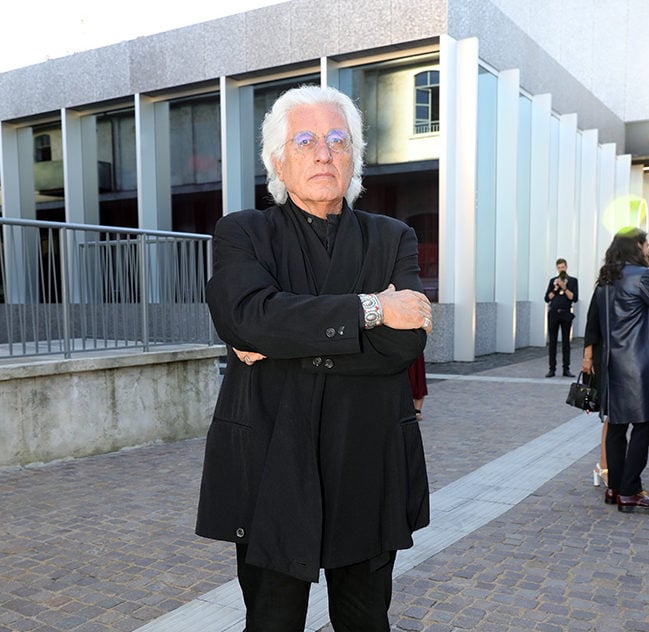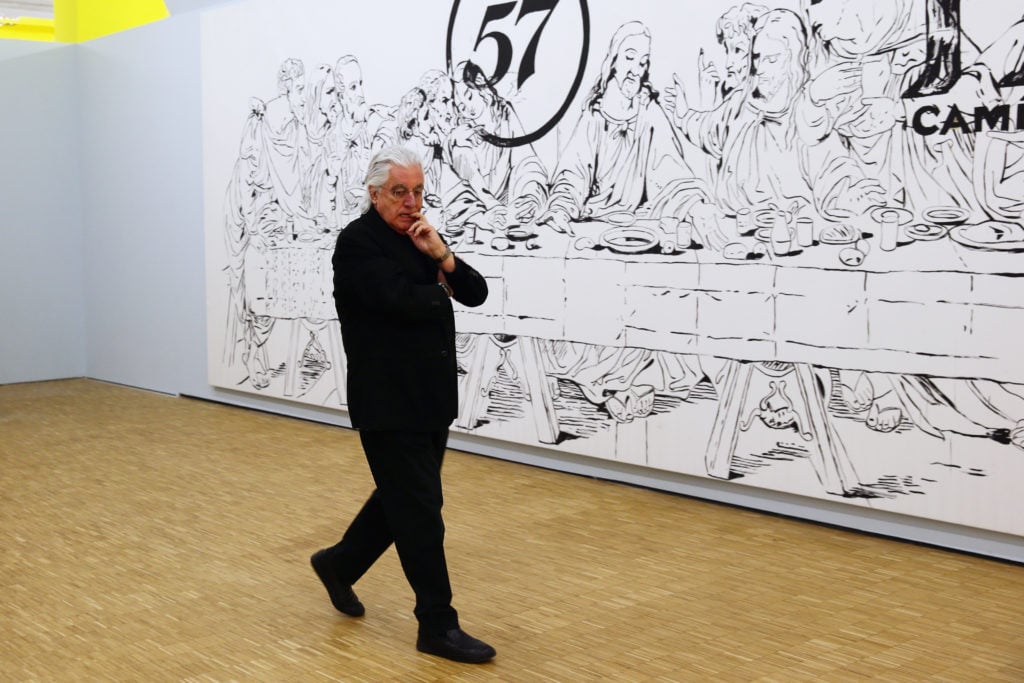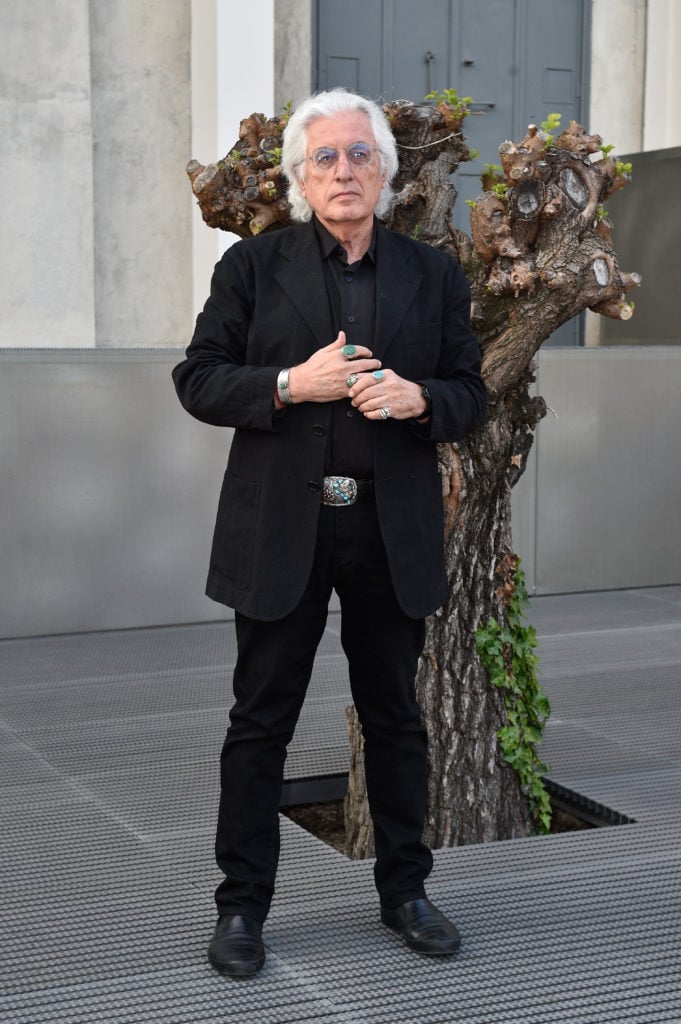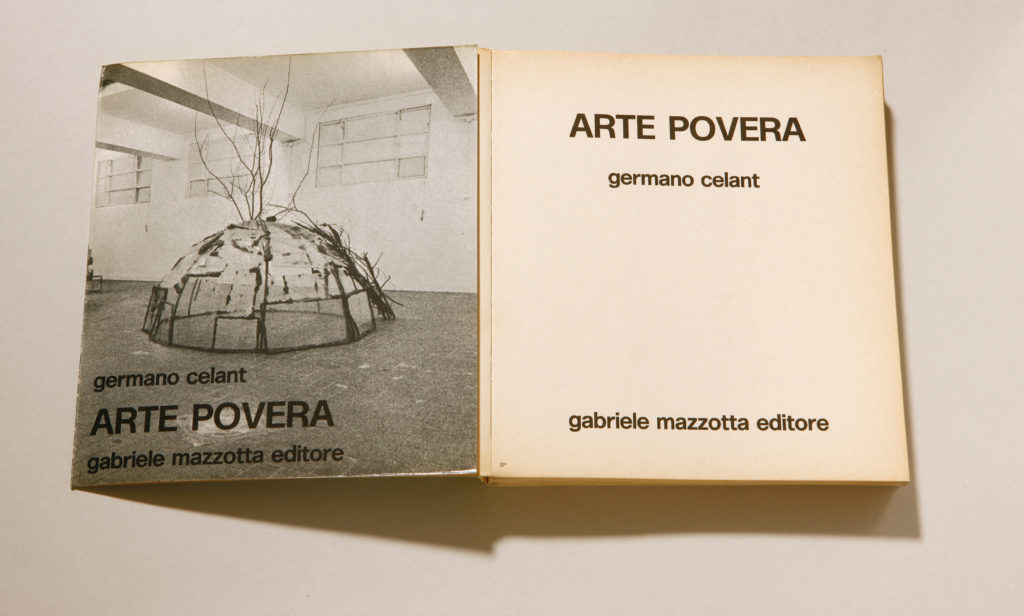People
Massimiliano Gioni on What He Learned From Germano Celant, the Troublemaking Curator With a Maniacally Precise Mind
The artistic director of the New Museum reflects on the revered Italian curator and critic.

The artistic director of the New Museum reflects on the revered Italian curator and critic.

Massimiliano Gioni

For as long as I can remember, I have been shocked by the fact that Germano Celant wrote the Arte Povera manifesto in 1967, when he was 27.
At the same age, I had moved to New York as the editor of Flash Art, the very magazine where Germano published his “Notes for a Guerrilla War.” His apartment in New York was on 12th Street and 4th Avenue, a few blocks west from where Francesco Bonami used to live and a couple blocks north of where Maurizio Cattelan—still unable, either financially or psychologically, to afford his own place—shared an apartment with a roommate.
I was living on 18th Street as a guest of RoseLee Goldberg, who saved my life by letting me live with her and her family because my monthly salary from the magazine was $500. She and Germano went way back, and had collaborated on a small but fabled book and exhibition in London in the 1970s.
By the time I got to New York at the end of 1999, Germano was already a kind of living legend: for his role in the Arte Povera movement; his shows at the Guggenheim and the Palazzo Grassi, where he had been one of the last disciples of Pontus Hultén; his collaborations with Ingrid Sischy for Artforum and Interview; his radical exhibition, “Ambiente/Arte,” for the 1976 Venice Biennale, which he also directed in full in 1997, and had less than six months to organize; and the hundreds of books, catalogues, and exhibitions he put together for virtually every museum in the world, from the Pompidou to the Art Gallery of Ontario.
He was revered and feared and sometimes bad-mouthed for his presumed greed and authoritative style, and in certain Italian circles, he was believed to have controlled the art system for decades. In 2000, he curated the controversial Giorgio Armani exhibition at the Guggenheim, which had been paid for by the designer; 15 years later, he caused somewhat of a scandal by curating the exhibition “Art & Foods” for the Expo in Milan for a €750,000 contract. Whether you liked it or not, one had to give him credit for making the curatorial game bigger than anyone before him.

Germano Celant before Andy Warhol’s The Last Supper (Camel-57) at the “Arts & Foods” exhibition, which Celant organized for the 2015 Milan Expo. Photo by Vittorio Zunino Celotto/Getty Images.
All this is to say that when I moved to New York, Germano was for me literally a landmark: his house was a place that I would point out to friends and visitors from Italy, his career a series of milestones I would keep an eye on to understand how I was doing.
And yet, even as established as he was, some of his best work was still to come in the form of a series of group shows in Venice and Milan at the Fondazione Prada, which he had been directing since 1995: “The Small Utopia: Ars Multiplicata” (2012); “Art or Sound” (2014); “Post Zang Tumb Tuuum” (2018); and his somewhat contentious remake of Harald Szeemann’s “When Attitudes Become Form” (2013).
Famous were his rifts with younger curators. But for some reason, with me, he always proved to be the kindest and most generous colleague—if not a big brother or an uncle, at least a benign godfather. After he received the Agnes Gund Curatorial Award from Independent Curators International for his reinterpretation of “When Attitudes Become Form,” I remember teasing him for finally winning a prize for a show he had copied from someone else.
To his credit, he was not incapable of very negatively reviewing an exhibition after having complimented you in person. I took that as a form of honesty, even though I am sure sometimes it was a kind of strategy. But he knew how much I had admired his Arte Povera book, and how it had literally changed my life when I had encountered it at age 16. I had secretly hoped that a book of mine could have the same effect, if not on him, then at least on some young teenager somewhere.
He was a man of great appetites. Once, during a tour of his house, which doubled as a laboratory, he proudly pointed to Bruce Nauman’s drawing for his historic sculpture, From Hand to Mouth, saying that it was the only artwork he had ever paid for. He had acquired it from legendary gallerist and agitator Seth Siegelaub, I believe for a few hundred dollars, and it sat among many other great gifts and trades from dozens of artists. (Another sweet memory of that visit was seeing his then 10-year-old son, Argento, jumping and playing among the artworks which he proudly proclaimed as his own. Those who had known Germano for years used to say that after he met his wife, Paris, with whom he had Argento, he became warmer and kinder.)

Despite Germano Celant’s punk rock appearance, he took an organized and precise mind. Photo by Pietro D’Aprano/Getty Images for Prada.
In spite of his punk rock appearance—leather vests, jade rings, cowboy belts—Germano always had the slightly maniacal precision of an accountant. After all, at age 30 in 1970, he organized an entire exhibition for the Galleria Civica in Turin about Conceptual art drawn from his own meticulously organized archive. He owned thousands of books, distributed between his home and countless storage spaces, all dutifully catalogued. At last count, he claimed to have 80,000 volumes, including magazines. Until just a few years ago, he even still kept some of them in his mother’s house in Genoa.
A tour of his house was never complete before a visit to the room packed with the many books he had authored. I had been trying to collect many of his historical publications, and one of them—the catalogue for “Ambiente/Arte”—I had been trying to obtain for some time. It was one of the hardest of his books to find, and I once even offered 10 of my own catalogues to him in exchange for one of his old copies of the publication, but he still didn’t capitulate. I eventually bought it online years later.
During one of these visits to his home, in the company of Paul McCarthy, the artist told Germano that he had loved the Arte Povera book so much, that when he was young and broke and couldn’t afford to buy his own copy, he shared one with a friend: they literally cut it in half and held on to their own parts, which they exchanged periodically.
Germano’s presumed arch-rival in the Italian art system, Achille Bonito Oliva, used to tease Germano by saying that his initials stood for General Catalogues, as to indicate his ability to release an impressive number of catalogues raisonnés every year. And it was impressive: in just over one year, between 2019 and the first months of 2020, Germano had published monographs on Richard Artschwager, Marco Bagnoli, Kaws, Jannis Kounellis, Mimmo Rotella, Franco Toselli, Emilio Vedova, Doug Wheeler, Michele Zaza, and probably many others.
And yet, for all his professionalism and efficiency, when a few years ago I interviewed him about his relationship with Alighiero Boetti and the birth of Arte Povera, he proudly said that the mythical origin of the movement owed perhaps less to Maoist student revolts or to Jerzy Grotowski (the Polish theater director from whom Celant borrowed the notion of a “poor” art), than to the consumption of large quantities of recreational drugs in artists’ studios.

A copy of Germano Celant’s Arte Povera, one of the countless publications he authored over the course of his career. Photo by Fabrizio Carraro/Electa/Mondadori Portfolio via Getty Images.
At the time, Germano was still a 25-year-old kid, and a pupil of art historian Eugenio Battisti, whose most famous book, L’Antirinascimento (the anti-Renaissance), displayed a contrarian attitude that would have rubbed off on the young Celant. Anyway, whatever they were smoking, it clearly served them well. I still remember one of the pages in the beautifully and starkly designed Arte Povera book that had an entry by Michelangelo Pistoletto that read: “Dear Germano, the word ‘povera’ is ok. You rich, me poor, it’s not ok. You poor, me rich, it’s not ok.” This was the climate of idealism and rebellion that fed their dreams.
And Germano’s relationships with his old friends did not dissolve. In 2013, as I was sitting with Marisa Merz in her house (she was 87 years old at the time), her phone buzzed with a message: it was Germano wishing her a happy new year. That stayed with me as an image of continued friendship, support, and respect, and as a reflection of a relationship between artist and curator that had lasted for more than half a century. That intimacy proved to me—if it was at all necessary—that Germano was a great friend of artists.
As his early days prove, despite Celant’s precision and accuracy in his accountings, he was allergic to bureaucracy. He would say proudly that when he was working as a curator at the Guggenheim, he never had an office: he only had a chair. He still belonged to a generation for whom museums had to be reinvented and transformed. He was still a troublemaker, even though he had recently described himself to me as a tinsmith.
Starting, I believe, in 2006, I would periodically receive an email from Germano or from one of his collaborators at the Studio Celant asking for the catalogue of one of my recently opened shows. I think I still have the email in which he asked me for the book for my show, “After Nature,” about which he had read a review in the New Yorker. Every time he asked for a catalogue, I knew I was doing something right, or at least good enough to capture his attention. The last time I saw him in New York, at the Armory Show at the beginning of this past March, he said he was coming to see the Peter Saul and Jordan Casteel exhibitions at the New Museum. And that meant more to me than he probably knew.